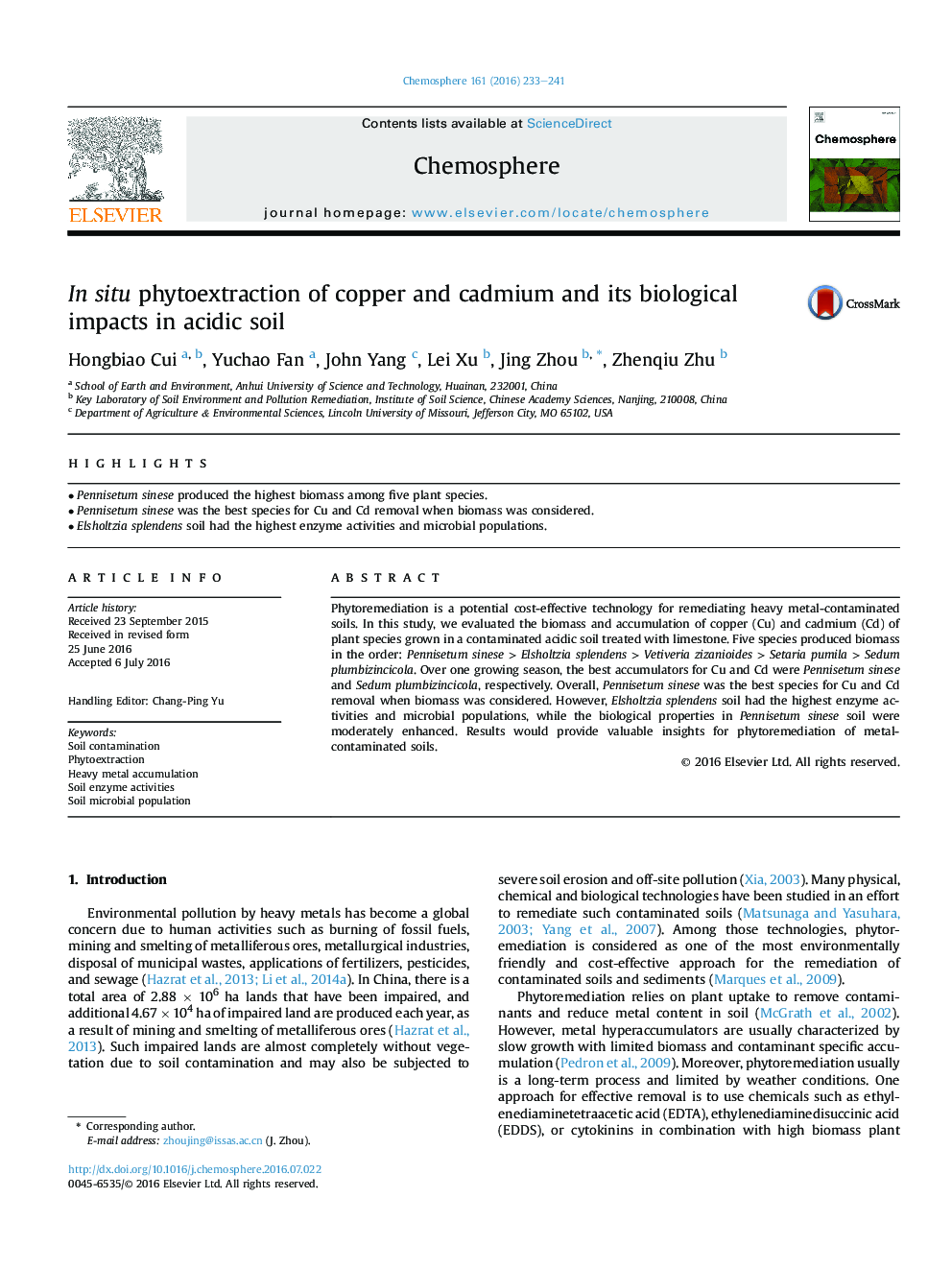| Article ID | Journal | Published Year | Pages | File Type |
|---|---|---|---|---|
| 6306577 | Chemosphere | 2016 | 9 Pages |
Abstract
Phytoremediation is a potential cost-effective technology for remediating heavy metal-contaminated soils. In this study, we evaluated the biomass and accumulation of copper (Cu) and cadmium (Cd) of plant species grown in a contaminated acidic soil treated with limestone. Five species produced biomass in the order: Pennisetum sinese > Elsholtzia splendens > Vetiveria zizanioides > Setaria pumila > Sedum plumbizincicola. Over one growing season, the best accumulators for Cu and Cd were Pennisetum sinese and Sedum plumbizincicola, respectively. Overall, Pennisetum sinese was the best species for Cu and Cd removal when biomass was considered. However, Elsholtzia splendens soil had the highest enzyme activities and microbial populations, while the biological properties in Pennisetum sinese soil were moderately enhanced. Results would provide valuable insights for phytoremediation of metal-contaminated soils.
Keywords
Related Topics
Life Sciences
Environmental Science
Environmental Chemistry
Authors
Hongbiao Cui, Yuchao Fan, John Yang, Lei Xu, Jing Zhou, Zhenqiu Zhu,
